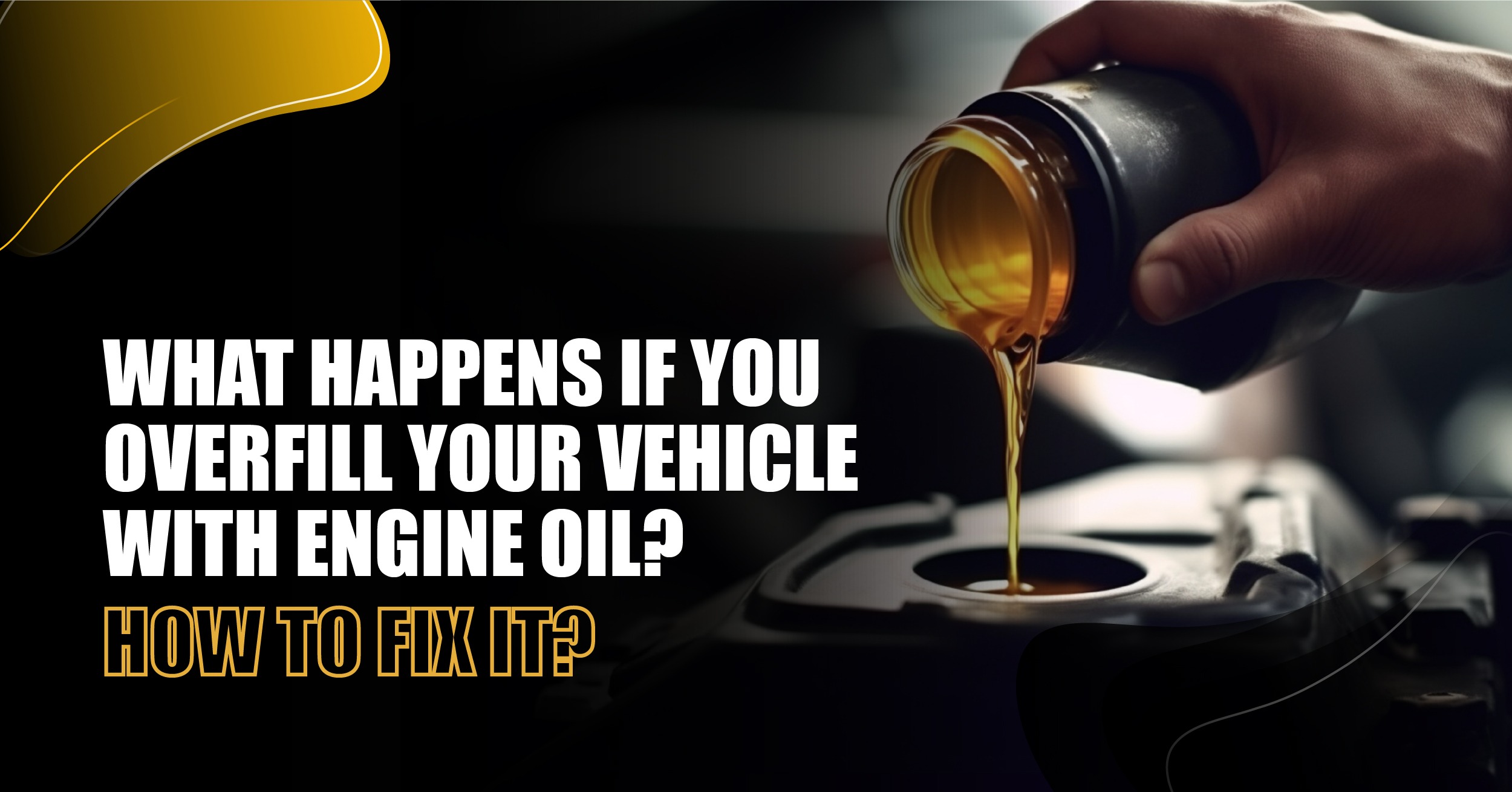Engine oil is essential for the smooth and efficient operation of your vehicle. It lubricates the moving parts, reduces friction and wear, and prevents overheating. However, too much of a good thing can be bad, and overfilling your engine with oil can cause serious problems. In this blog post, we will explain what happens when you put too much oil in your car, how to check the oil level, and how to fix it if you overfilled it.
What Happens If You Put Too Much Oil in Your Car?
If you add too much oil to your car engine, the oil level in the oil pan will rise above the normal range. This can cause several issues, such as:
• The crankshaft, which rotates at high speed, will dip into the excess oil and whip it into a froth. This will create air bubbles in the oil, which will reduce its ability to lubricate the engine parts. This can lead to increased friction, wear, and overheating.
• The excess oil will increase the pressure in the crankcase, which is the lower part of the engine where the oil pan is located. This can force the oil to leak out of the seals and gaskets that are designed to keep it inside. You may notice oil dripping from under your car or staining your driveway or garage floor.
• The excess oil can also get pushed into the combustion chambers, where the fuel-air mixture is ignited by the spark plugs. This will cause the oil to burn along with the fuel, creating blue smoke from the exhaust. This can damage the spark plugs, catalytic converter, and oxygen sensor, as well as increase your emissions and fuel consumption.
• If left unchecked, overfilling your engine with oil can lead to severe engine damage. The lack of lubrication, increased heat, and high pressure can cause metal parts to warp, crack, or break. This can result in costly repairs or even a total engine failure.
How to Check the Oil Level
To avoid overfilling your engine with oil, you need to check the oil level regularly and follow the manufacturer’s recommendations for the type and amount of oil to use. Here are some steps to check the oil level:
• Park your car on a level surface and turn off the engine. Wait for a few minutes to let the oil settle in the oil pan.
• Open the hood and locate the dipstick, which is a metal rod with a loop or handle at one end. It is usually marked with an oil can symbol or labeled “OIL”.
• Pull out the dipstick and wipe it clean with a rag or paper towel. Insert it back into its tube and push it all the way down.
• Pull out the dipstick again and look at the tip. There should be two marks or notches indicating the minimum and maximum oil levels. The oil should be between these marks, preferably closer to the maximum mark.
• If the oil is below the minimum mark, you need to add more oil. If the oil is above the maximum mark, you have overfilled it and need to remove some oil.
How to Fix It If You Overfilled It
If you have overfilled your engine with oil, you need to drain some of it as soon as possible. There are two ways to do this:
Traditional Method
• Raise your car and place jacks under it for safety.
• Remove the cover under the engine if present.
• Locate the oil plug (Use a repair manual to locate it if unsure).
• Remove the drain plug and drain it into a bucket with the amount you think you overfilled it with (usually 1 quart).
• Replace the oil plug and tighten it to specification.
• Lower your car and check the oil level again using the dipstick.
• Repeat if necessary until you reach the desired level.
Modern method:
• Locate the dipstick and pull it out.
• Attach one end of the hose to the syringe or pump and insert the other end into the dipstick tube until it reaches the bottom of the oil pan.
• Pull back on the syringe or pump to suck out some of the excess oil into a container.
• Check how much oil you have removed and compare it with how much you overfilled it.
• Repeat if necessary until you reach the desired level.
Overfilling your engine with oil can have serious consequences for your car’s performance and health. It can cause oil foaming, leakage, burning, and damage. To prevent this, you should check the oil level regularly and use the right type and amount of oil for your car. LubePlus Energies offers a wide range of high-quality engine oils and lubricants for every car and industry. Whether you need synthetic, semi-synthetic, or mineral oil, LubePlus Energies has the perfect product for you. By using LubePlus Energies, you can ensure that your engine runs smoothly and efficiently.






